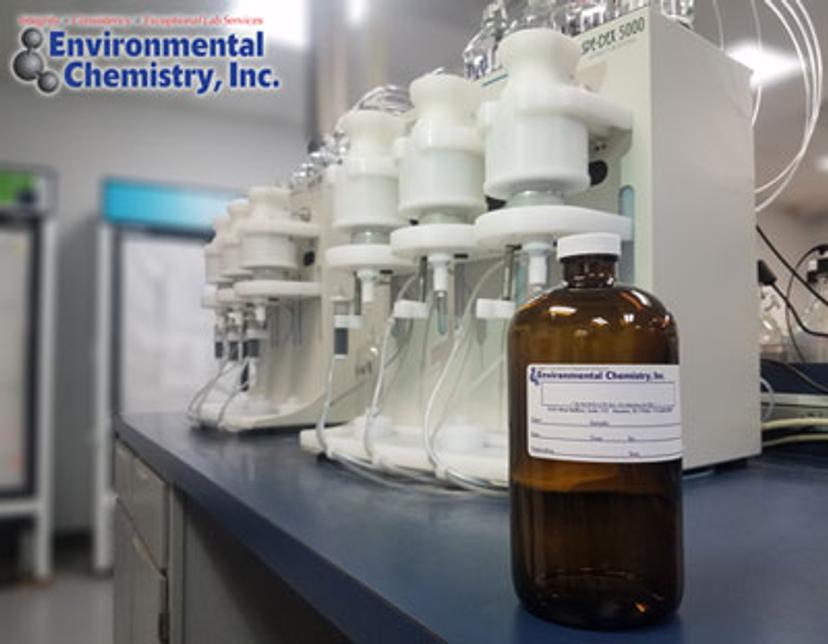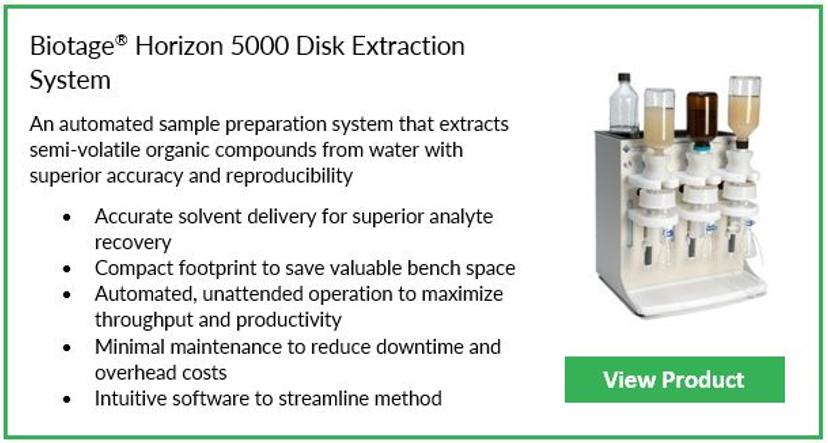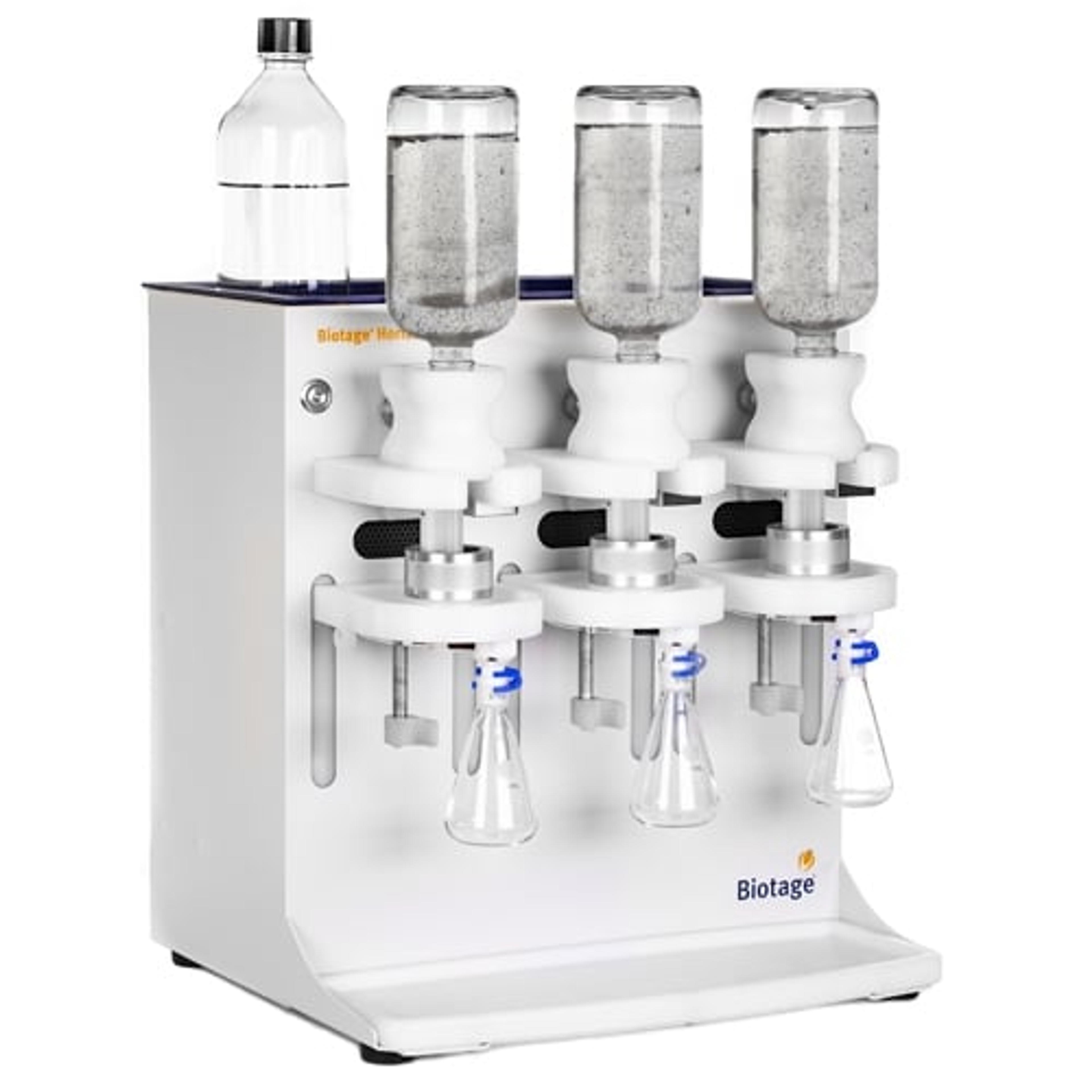Sample Prep Solved: An Insight into Automated Solid Phase Extraction
Discover how solid phase extraction has improved the quality and throughput of analysis at an environmental lab in Texas
18 Dec 2018
Analytical laboratories form the backbone of environmental monitoring around the world. Responsible for the detection of contaminants ranging from oil and grease in waste water to solid petrochemical waste, teams rely on approved methodology and outstanding technological solutions, including solid phase extraction (SPE).

As with any analysis, the primary step in environmental analysis is sample preparation and an increasingly popular method for this is SPE. Composed of a solid chemical media mounted onto appropriate sorbent material, SPE is used to chemically separate different compounds in a sample. One Texas-based company, Environmental Chemistry Inc. (ECI), has been an eager adopter of automated SPE technology, having bought their first extractor, a Biotage® Horizon 4790 (previously known as SPE-DEX® 4790) from Horizon Technology, now part of Biotage, almost 10 years ago. ECI prides itself on the service it offers customers, meeting EPA and state requirements, and moving one step further with a rigorous program that reduces the likelihood of one of the potentially costliest occurrences in any lab: human error. To that end, keeping up with the latest technology is of crucial importance.
Here, SelectScience® speaks with Clint David, VP of Operations at ECI, to find out how he and his team have integrated SPE into their workflow:
How long have you been at ECI, and when did you introduce SPE?
I've been with Environmental Chemistry Inc. for going on 12 years now. We purchased our first automated extraction system in 2009, from Horizon Technology, now a part of Biotage. We primarily use this system for EPA Method 8270 analysis of hazardous waste classification leachates and industrial wastewater samples that are extracted through the solid phase extraction process and analyzed by GC-MS.
How have you integrated SPE over the past decade?
In 2009, we saw a large growth in the demand for waste classification analysis from our clients, often within quick turnaround times. This required the extraction and analysis of TCLP leachates by Method 8270 for semi-volatiles. At the time, we were doing continuous liquid-liquid extraction for all of our aqueous semivolatile samples. We made the decision at that time — due to the faster extraction times and the lower volumes of solvent that automation would get us — that the Biotage® Horizon 4790 was the tool for us. This was due to sample volume that we were receiving on a week-to-week basis, and the speed of sample turnaround; so not having to wait 48 hours for a single sample to extract by continuous liquid-liquid was definitely something that was beneficial.
More recently, with the Methods Update Rule and Method 625.1 allowing for solid phase extraction of samples, our lab has the experience and equipment to make the transition more easily.

Why do you think it's so important to make sure you have the latest technology for processing environmental samples?
There are several benefits to keeping up with the latest technology. For us, this often means faster processing times, as well as increased traceability and quality assurance in our system. We have also seen an increase in automation, which saves our analysts time, which is really important.
Do you have any other technology from that company?
We also have the SPE-DEX® 3000, which we use for our oil and grease analyses. We've been using that system for a long time, since 2007 I believe, and it just hit its end of life as of tomorrow. Every cent counts, especially for smaller laboratories, so return on investment and being able to have equipment that you can throw the kitchen sink at and it'll keep on ticking for 10 years is fantastic.
You recently upgraded to the Biotage® Horizon 3100. What makes you come back to Horizon, now part of Biotage, each time you want to get the newest SPE technology?
We were very pleased with the initial investment we made in SPE technology in 2009, and we have extracted a large number of samples using SPE. Those things were humming every single working day, and they generated a lot of data.
We also found that the machines were very simple to train people on: we had six to eight analysts use the extractors over the years, and they were able to use the machines easily, and also maintain them. [My analysts] were also able to get in touch with the technical support team at Horizon/Biotage if it was ever needed.
To have equipment that lasts for 10 years, especially with that number of samples going through it and petrochemical solid waste — which are hands down the worst environmental samples I can imagine — it has been a fantastic result for us.
What upcoming changes in technology and methodology do you see being key?
I think the name of the game in environmental testing is using less sample volume to achieve even lower detection limits, especially with the updated regulations and the methods that are coming out. Case in point being EPA Method: 625.1. I think that's where everything is headed.
In terms of technology, currently I can see everything moving towards automated, smaller and faster equipment, which can use lower sample volumes and require less technician time, as well as further progress towards achieving even better results and lower detection limits. In other words, technology which uses 10 mL of sample rather than a whole liter – however this technology will still need to achieve the same detection limits with consistency and performance.


